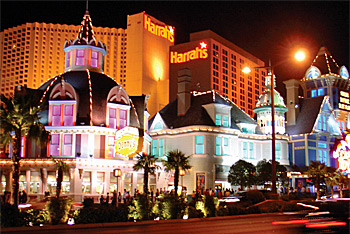Keeping the Lights On: Industrial Energy Efficiency

Each year, America's utilities and factories send enough heat up their chimneys to power all of Japan. But with existing, proven technologies, we can harness that waste energy, dramatically cut electricity costs, and make our industries more competitive.
According to Oak Ridge National Laboratory, significantly increasing our industrial energy efficiency could create up to 1 million jobs. Further, improving the efficiency of our power generation could result in more than $200 billion in private investment over 10 years, according to a study by the Industrial Energy Consumers of America, an organization that represents many of the country's largest manufacturers.
Improving Reliability and Performance: The 2003 Northeast Blackout
Companies save money and secure a highly reliable power source when waste-heat CHP systems are deployed. These energy efficiency technologies can ensure the lights stay on, even in the face of a catastrophic blackout. On Aug. 14, 2003, large portions of the Northeast and Midwest lost power.
An estimated 50 million people were left without electricity for approximately four days. Without power, many manufacturers and other businesses were unable to maintain operations, leading to idle factories and lost sales. Government estimates place the blackout's impact on the U.S. economy at $4 billion to $10 billion. However, many of the affected region's 491 facilities and factories with CHP were able to continue operations without access to electricity from the commercial grid. Although some lost power for a few minutes or hours, many came back online quickly and were able to operate normally through the rest of the blackout.
|
What Is Industrial Energy Efficiency? Industrial energy efficiency uses waste heat left over from regular industrial processes to generate additional electricity or to heat or cool nearby buildings. This can be accomplished using a suite of time-tested technologies such as combined heat and power (CHP), waste heat recovery, district energy, and thermal storage systems. In fact, America's first commercial power plant, opened in 1882, used the excess steam generated from producing electricity to heat neighboring buildings. With rising energy prices affecting companies large and small, using waste heat and recycling their energy can reduce costs and give businesses the flexibility to invest the savings elsewhere. For example, Lorin Industries in Michigan has recycled its waste heat since 1943 and added capacity in 1990. The system saves the company $540,000 per year, and the newest addition paid for itself in just four years, largely due to the significant decrease in the company's need to purchase electricity during more costly peak hours. |
Entenmann's Bakery in Bay Shore, N.Y., has a CHP system that uses four natural gas-burning reciprocating engines to produce 5.1 megawatts (MW) of electric power. The bakery initially installed the system because of substantial losses associated with power outages at food processing plants. In normal operations, the system supplies the daily base-load power, and Entenmann's sells the excess electricity back to the local utility. During the 2003 blackout, Bay Shore was heavily affected, yet Entenmann's Bakery stayed fully operational.
Improving Reliability and Performance: Hurricane Katrina, 2005
Industrial energy efficiency systems can also support lifesaving systems and operations. Mississippi Baptist Medical Center in Jackson, Miss., is a 646-bed urban hospital with 3,000 employees. It has a 4.3-MW natural gas CHP system, installed in 1994, that allowed the hospital to stay open during Hurricane Katrina. It was the only hospital in the Jackson area to be 100 percent operational during the storm and its immediate aftermath, which allowed it to treat a large number of people and provide food and housing for displaced patients. Under normal circumstances, the CHP system meets almost all of the hospital's electricity needs and more than half of its chilled water needs, which has led to an estimated cost savings of $738,000 annually.











